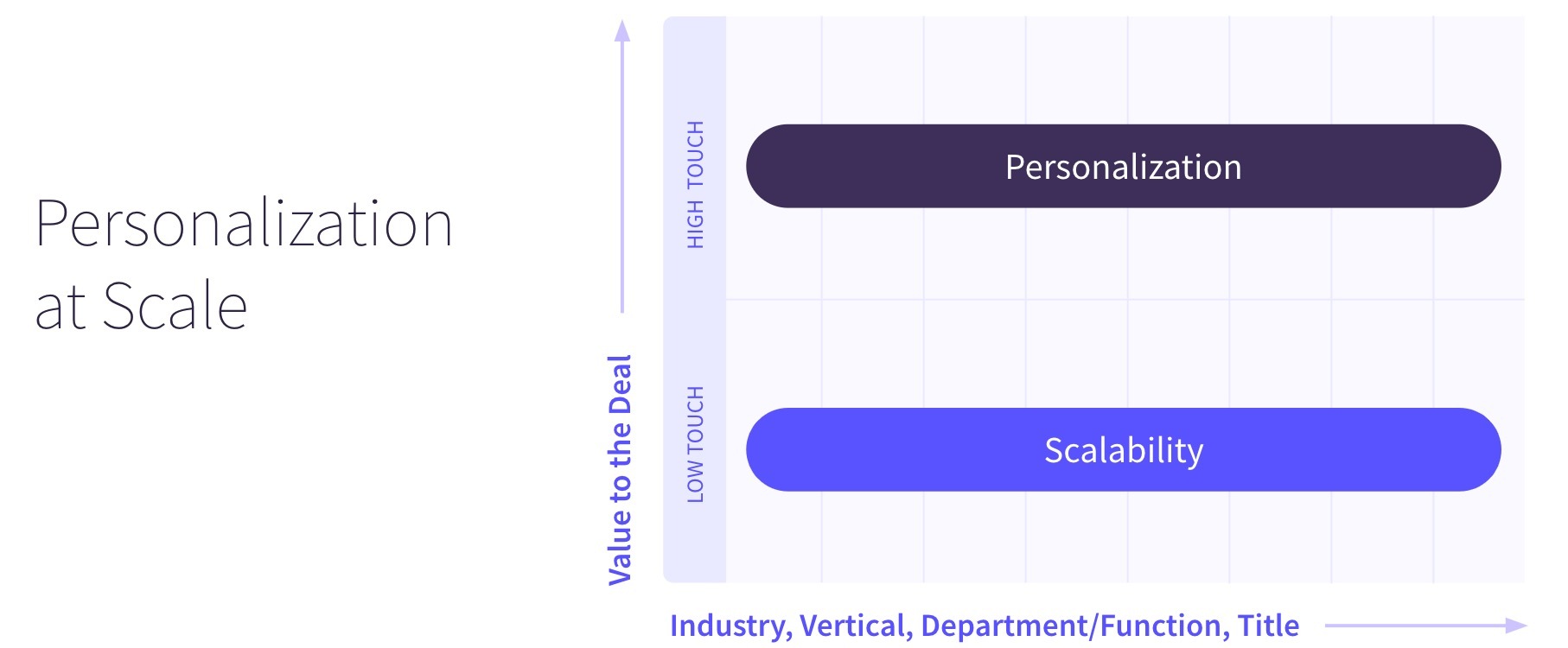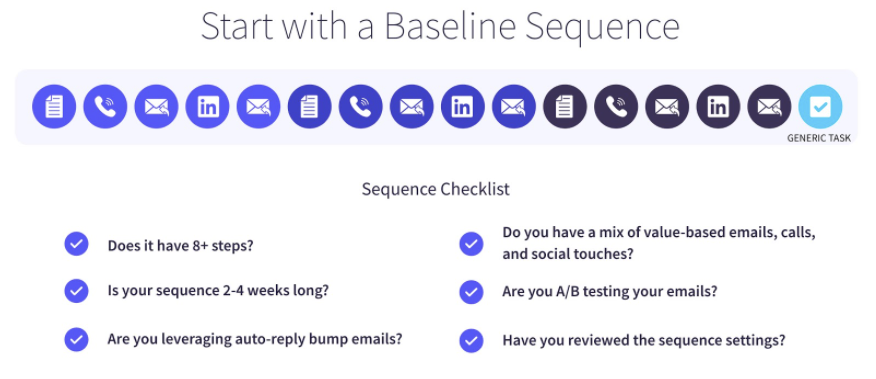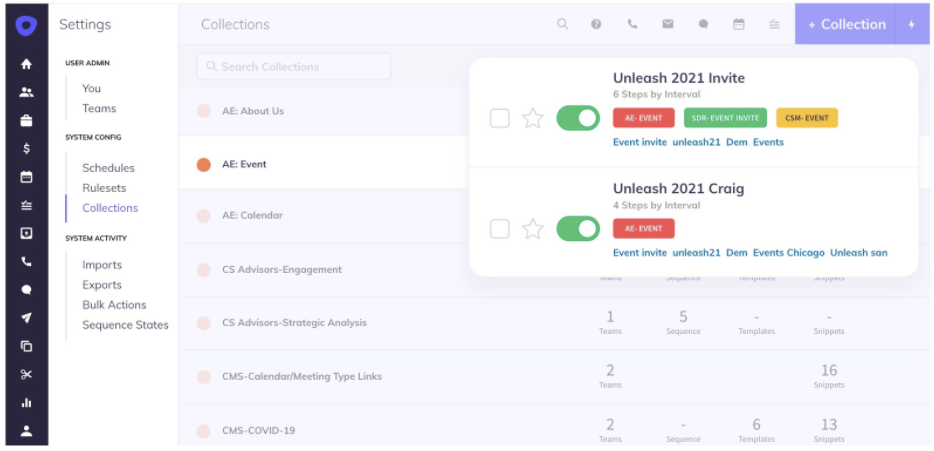As a leader, you’re looking to answer the age-old question: How can my team use the most effective content for the right people at the right time?
The challenge many sales and post-sales teams face is finding the balance between volume and precision. They’re seeking the sweet spot between reaching people at scale and personalizing touchpoints for a high return on investment.
Through testing and observation, we’ve found that the most successful Outreach customers use a scale vs. personalization strategy with “high” and “low” approaches.

With just 4 steps, these teams are able to efficiently identify customers, build content, and execute strategies that find the balance between volume and precision.
Read: Sales Hacker’s Complete Guide to Personalization at Scale
Step 1: Build a segmentation matrix
At Outreach, we usually segment customers by persona and buying power.
But segmentation is not one size fits all. You know your customers best, so build your segments based on how your team prioritizes their efforts.
Some questions to consider are:
- Who are we reaching out to?
- What’s important to them?
- How valuable are they to the deal?
One way to answer these questions is through a segmentation matrix that represents your buyers, their goals, and how they relate to your value.
The matrix also provides a scale vs. personalization priority framework for a high vs. low touch engagement strategy.

Creating a persona matrix like the one above will help you segment your prospects by indices to structure your content.
Related resource: Guide Your Team to Successful Personalization at Scale with Technology
Step 2: Build a baseline sequence
Once you’ve defined your segmentation matrix, begin building out baseline sequences that you can clone and adjust as needed.
Consider starting with your highest touch or most personalized segment. Use that as your baseline before moving down segment and converting high touch or manual sequence steps to automated ones for your scaled, low touch approach.
For more on this, check out our Core Master Sequences guide, and our article How to Create Sales Sequences Your Reps Will Actually Use.

Remember, prospects with higher buying power are harder to get in touch with but are worth the time investment.
High-touch sequences should have more manual, personalized emails, with more social touches, and likely have longer step intervals. Sequences for prospects with less buying power should have more automated emails, fewer steps with shorter intervals, and heavier automation.
To help get you started with high vs. low touch sequences, consider using Outreach Blueprints as a framework for best practices like diversity of touches, step intervals, and sequence length. At Outreach, our baseline sequence is our agoge sequence.

Watch: Sam Nelson breaks it down in his Outreach Effective Sequences Workshop (~1 hr)
Step 3: Clone and update your baseline sequence
Once you have your baseline sequence from step two, you can create increasingly lower-touch versions for your other segments by cloning your baseline sequence and updating as needed.

To build a low-touch version from your baseline sequence, consider:
- Converting manual emails to automated versions for a less time-consuming workflow
- Shortening intervals between steps
- Reducing diversity of steps, for example, social touches

Step 4: Make segmentation easy to execute
Once you have your sequences for each segment, make sure it’s easy for reps to find the content. Consider maintaining a consistent naming convention for your sequences, templates, and snippets and using collections as content folders broken up by playbook, segment, user, etc.

Remember, even the best content strategies need to be measured and updated for effectiveness. Learn more with How to Support Your Outbound Motion With a Sales Content Supply Chain, and share your best strategies in the comments below!



